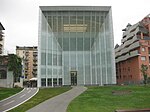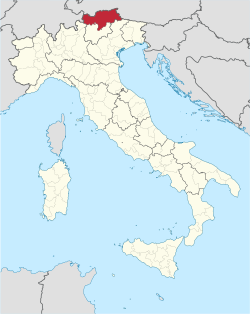Free University of Bozen-Bolzano

The Free University of Bozen-Bolzano (Italian: Libera Università di Bolzano, German: Freie Universität Bozen, Ladin: Università Liedia de Bulsan) is a university primarily located in Bolzano, South Tyrol, Italy. It was founded on 31 October 1997 and is organized into five Faculties. The Free University of Bozen-Bolzano (unibz) aims to offer students a multilingual, practice-oriented education that meets the demands of the local and the European labor market. Lectures and seminars are held in Italian, German and English. The only exception is the Faculty of Education, which offers Italian, German and Ladin speaking students separate training sections. The university offers study programmes ranging from bachelor's degrees to doctorates. The emphasis of teaching is to provide theoretically sound and practice-orientated training. A large proportion of educational activities take place as seminars, lectures given by guest speakers, practical training and workshops. Within the framework of the academic exchange program students are encouraged to spend one or more semesters at universities abroad.
Excerpt from the Wikipedia article Free University of Bozen-Bolzano (License: CC BY-SA 3.0, Authors, Images).Free University of Bozen-Bolzano
Piazza Università - Universitätsplatz, Bolzano - Bozen Centro Storico - Altstadt
Geographical coordinates (GPS) Address Phone number Website External links Nearby Places Show on map
Geographical coordinates (GPS)
| Latitude | Longitude |
|---|---|
| N 46.498055555556 ° | E 11.349444444444 ° |
Address
Freie Universität Bozen - Libera Università di Bolzano
Piazza Università - Universitätsplatz 1
39100 Bolzano - Bozen, Centro Storico - Altstadt
Trentino-Alto Adige/Südtirol, Italy
Open on Google Maps










